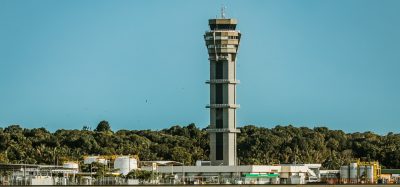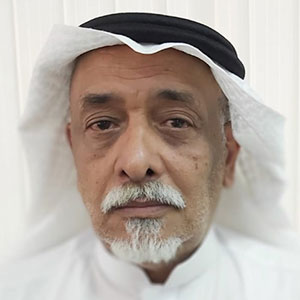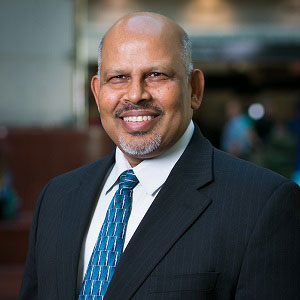Denver Airport: building for the future
Posted: 3 October 2025 | Gabriel Higgins | No comments yet
Denver International Airport aims to become the world’s greenest, advancing solar power, AI-driven asset management, and exploring nuclear energy to meet future aviation demands.


Credit: Denver International Airport (DEN)
Denver International Airport (DEN) is one of the most ambitious airports in the world today. Located on the high plains of Colorado, surrounded by the Rocky Mountains, Denver is not only the largest airport site in North America but also the second largest by landmass globally. Its size gives it unique opportunities, and equally unique challenges, as it seeks to redefine what a 21st century airport should look like.
With passenger numbers surging, infrastructure ageing and environmental responsibilities intensifying, Denver’s leadership has set out an ambitious vision: to become the greenest airport in the world, while managing growth. Leading this effort include Phil Washington, Chief Executive Officer, and Brian Oldham, Senior Director of Asset Management, who together are shaping Denver towards a sustainable, technologically advanced future.
Declaring a green ambition
When Phil Washington assumed the role of CEO nearly four years ago, he made a decisive statement of intent: Denver Airport would become the world’s most sustainable airport.
Join our free webinar: Revolutionising India’s travel experience through the Digi Yatra biometric programme.
Air travel is booming, and airports worldwide need to move passengers faster and more efficiently. Join the Digi Yatra Foundation and IDEMIA to discover how this groundbreaking initiative has already enabled over 60 million seamless domestic journeys using biometric identity management.
Date: 16 Dec | Time: 09:00 GMT
rEGISTER NOW TO SECURE YOUR SPOT
Can’t attend live? No worries – register to receive the recording post-event.
“One of the first things I declared was that we wanted to be the greenest airport in the world,” Washington explained. “So, we immediately took action. Expanding our solar array, plugging 54 abandoned oil wells on airport property, and pushing forward partnerships with airlines on sustainable aviation fuel.”
“We have the land, the ambition and the partnerships to make Denver the greenest airport in the world. With innovation and collaboration, we’ll get there.”
These early interventions have already yielded visible results. The capped wells removed a legacy environmental hazard from the site, while the expanded solar infrastructure significantly boosted renewable capacity. Washington is quick to acknowledge, however, that sustainability at Denver is an ongoing process rather than a finished goal.
“We are well on our way, but there’s a lot more to do,” he admitted. “Every new project, every new system we implement, is viewed through a sustainability lens.”
Cutting carbon, saving energy
One of the most impactful measures has been Denver’s performance energy contract. An initiative designed to drive efficiency across the airport’s growing facilities. This includes simple but effective technologies, such as automated lighting systems that switch off when rooms are unoccupied, and broader upgrades to heating, ventilation and energy systems.
“These improvements will save us millions of dollars over the next decade,” Washington said. “But they also reduce reliance on fossil fuels, cutting emissions in line with our goal of reducing greenhouse gases by 80% by 2050.”
The push towards sustainability is multifaceted. Denver is actively transitioning its vehicle fleet to electric models, exploring advanced generator technologies that meet stricter environmental standards and pursuing sustainable aviation fuel (SAF) collaborations with carriers. Together, these initiatives represent a comprehensive strategy to future-proof airport operations against both economic and climate pressures.
Land as a strategic advantage
A defining feature of Denver Airport is its size. With more land than any other airport in the world except one in Saudi Arabia (King Salaman International Airport), Denver is uniquely positioned to explore large-scale sustainability projects.


Denver International Airport (DEN) is the second-largest airport in the world by land area. Credit: Benjamin Allen-USA, Denver International Airport
“Because we have so much land, we can set an example for the entire world in terms of sustainability,” Washington noted. “It gives us the flexibility to trial renewable energy, rethink infrastructure layouts, and invite private-sector innovators to use our airport as a proving ground.”
This open approach is formalised through the Centre for Equity and Excellence in Aviation (CEEA). A new initiative with three pillars: career development, research and innovation, and business development.
The CEEA has three core missions, all designed to expand aviation’s role in both the local and global economy:
- Career pathways: creating structured opportunities for young people from surrounding communities to enter aviation professions, whether as pilots, aircraft mechanics, or engineers.
- Research and innovation: studying aviation ‘megatrends’ such as climate change, demographic shifts and technological disruption, while welcoming private companies to bring forward new sustainability ideas.
- Business development training: supporting historically underutilised businesses through a nine-week academy, equipping them with the knowledge to compete in the aviation supply chain.
“We’ve already started the curriculum,” Washington explained. “And we’re building a dedicated brick-and-mortar facility that will be complete by the end of 2025. This is about preparing the workforce and the industry for the future.”
CEEA also extends Denver’s ambitions internationally. As part of efforts to establish direct flights to Africa, Washington envisions the centre as a vehicle for knowledge exchange: “If we launch routes to Ethiopia, Ghana, or Senegal, we don’t just connect people, we share infrastructure expertise and training that can help develop aviation in those countries too.”
Asset management: planning for the next 30 years
This is where Brian Oldham’s asset management expertise comes in. Since joining Denver two years ago, Oldham has implemented a risk-based asset management programme with a 30-year timeline.
“The programme lets us prioritise replacements based on business risk,” Oldham explained. “We can predict when assets will fail, how much it will cost, and which year we’ll need to replace them.”
A critical tool in this strategy is Denver’s Operational Readiness and Transition (ORAT) programme, ensuring every new system or facility is seamlessly integrated into operations from day one. Staff training, operational manuals and asset data are all secured before handover, avoiding delays and gaps in knowledge.


Aerial shot of Jeppesen Terminal at Denver International Airport
This forward-looking philosophy is changing the way airports approach infrastructure. As Oldham emphasised: “Asset management isn’t just a maintenance tool, it’s a way of thinking. It’s about life-cycle planning and predictive capability.”
Both Washington and Oldham believe technology will transform airport operations. Denver is investing in IoT sensors to collect real-time data from across the airport, feeding into AI systems that can predict failures before they happen.
“We want to know when an asset is going to break down, not chase after it once it has,” Washington stated. “By combining conditional assessments with AI, we can create a predictive environment that keeps our infrastructure reliable.”
Oldham added that AI and machine learning will be vital for handling the complexity of Denver’s mix of ageing and newly built assets: “We can build models that say, ‘The last three times this pump failed, these four events occurred in the two weeks beforehand.’ That insight changes everything.”
Exploring nuclear power: a radical energy solution
Perhaps the boldest idea on the table is Denver’s exploration of small modular nuclear reactors (SMRs) to meet future power needs. The airport currently consumes about 50 megawatts of power, but projections suggest it will need 400 megawatts by 2045.
“There’s not an easy way to achieve that growth with traditional sources,” Oldham explained. “SMRs could allow us to meet our own demand, provide heating for facilities, and even sell surplus power back to the grid.”
“Asset management isn’t just a maintenance tool, it’s a way of thinking. It’s about life-cycle planning and predictive capability.”
The concept is still in its infancy in the US, with studies ongoing, but international examples are emerging. If realised, Denver could become the first airport in the world powered by nuclear energy, making it both 100% green and fully energy self-sufficient.
As of August 2025, the airport has Request for Proposals (RFP) to study the feasibility of building a small modular (nuclear) reactor (SMR) on the airport’s campus.
Washington sees it as consistent with the airport’s role as a pioneer: “We have the land and the ambition to trial bold solutions. Nuclear could be part of a future that makes aviation both cleaner and more resilient.”
The challenges ahead
Despite progress, challenges remain. Oldham pointed out that many airports are only beginning to grasp the true value of asset management. “Some think a maintenance management system equals asset management. It doesn’t. It’s just a tool. Asset management is a philosophy.”
Meanwhile, Washington emphasised that growth pressures will continue to test DEN’s capacity: “We’re one of the few airports simultaneously expanding and refurbishing at scale while passenger numbers keep rising. That’s not easy.”
Both agree that communication, between internal stakeholders, contractors, regulators, and the public, will be critical in maintaining transparency and trust throughout Denver’s transformation.
Denver International Airport is not simply updating facilities; it is reimagining the role of airports in a sustainable, interconnected world. From solar power and electric fleets to predictive AI systems and even the possibility of nuclear power, DEN is setting new benchmarks in innovation and environmental stewardship.
As Washington reflected: “We have the land, the ambition and the partnerships to make Denver the greenest airport in the world. With innovation and collaboration, we’ll get there.”
Oldham echoed the sentiment from an infrastructure perspective: “If we get life-cycle management right from day one, we’re not just saving costs, we’re building resilience for the next 30 years and beyond.”
Together, their vision presents not only a roadmap for Denver, but a potential blueprint for airports worldwide facing the dual challenges of ageing infrastructure and rising demand.
About the interviewees
Phillip A. Washington is CEO of Denver International Airport, the third busiest airport in North America by passenger traffic. He oversees more than a nearly $12 billion dollar Capital Improvement Program to modernise the airport to accommodate 100+ million annual passengers.
Brian Oldham was Denver International Airport’s Senior Director, Asset Management. Brian left his role at DEN in July 2025.
The International Airport Summit is open for registration!
Date: 19 – 20 November 2025
Location: JW Marriott Hotel Berlin
At our flagship event of the year, we will dive into the future of airport operations, with expert-led sessions on passenger experience, innovative smart technologies, baggage handling, airside operations, data, security, and sustainability.
This is where global airport leaders come together to share insights, challenges, and real-world solutions.
Limited complimentary passes are available for eligible professionals – first come, first served!
Related topics
Airport leadership, Artificial intelligence (AI), Capacity, Green energy, Innovation, Sustainability, Sustainable Aviation Fuel (SAF), Sustainable development, Workforce


















